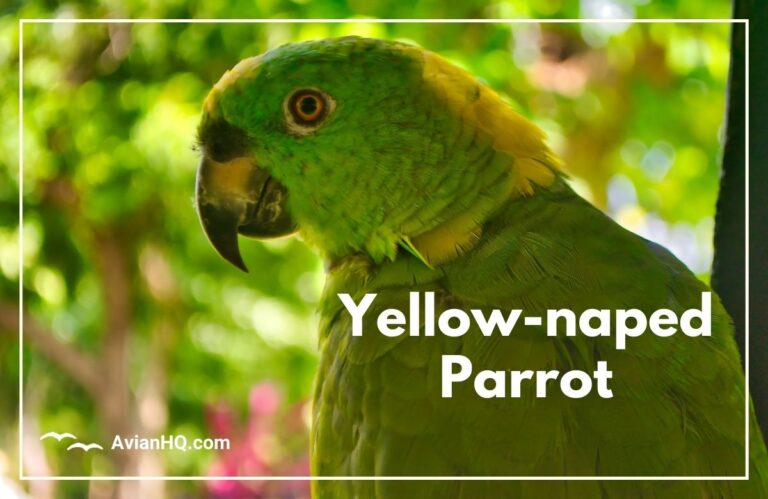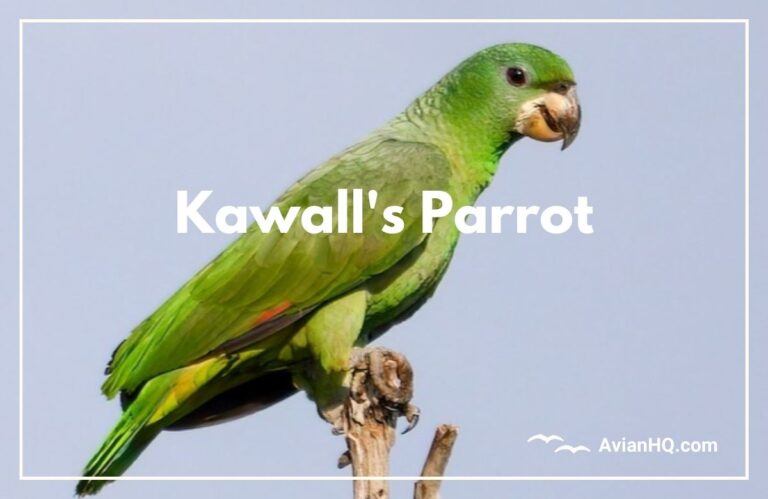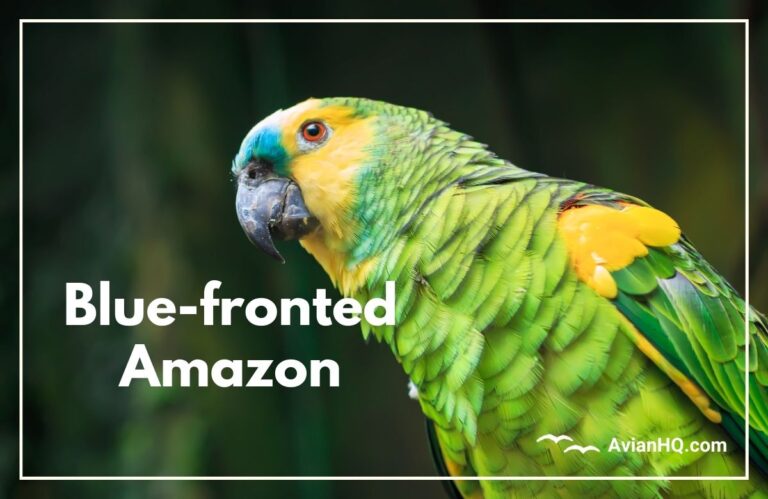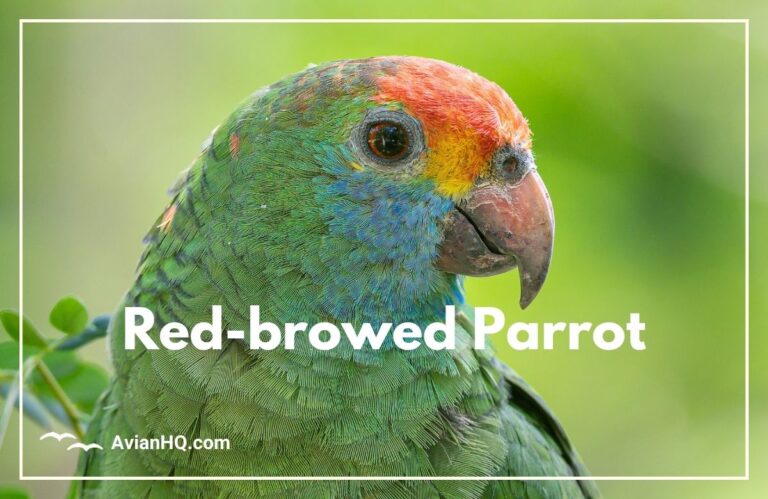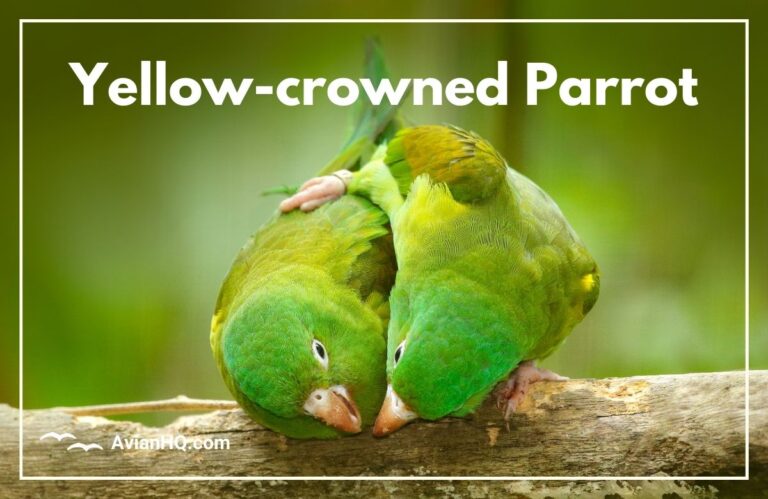Tres Marías Amazon (Amazona tresmariae)
The Tres Marías Amazon (Amazona tresmariae), once classified as a subspecies of the Yellow-headed Amazon and placed in the Amazona oratrix genus, stands out as a beautiful and rare parrot endemic to a small island chain off western Mexico. With brilliant plumage in shades of green, blue, yellow, and red, this Amazona parrot measures 35 to 38 centimeters (14 to 15 inches) long.
“The Tres Marías Amazon remains little known due to its restricted island habitat, but increasing attention focuses on protecting this threatened species.”
First described in 1900, the Tres Marías Amazon has faced threats from habitat loss and trapping for the pet trade. As a result, its numbers have declined over the past century. However, recent conservation efforts aim to preserve both the parrots and their island homes into the future.
This article will cover all aspects of these brilliant parrots, including:
- Their taxonomy and history
- Physical appearance
- Habitat requirements
- Diet and feeding behaviors
- Breeding and reproduction
- Ecology and interactions
- Conservation status and threats they face
By the end, you’ll have an in-depth understanding of this eye-catching island endemic – the Tres Marías Amazon parrot.
History and Taxonomy
The Tres Marías Amazon parrot has a relatively short scientific history, as it wasn’t discovered until the early 20th century.
First Discovery
The species was first formally described in 1900 by American naturalist Edward William Nelson. Nelson collected specimens during an biological survey expedition to the Tres Marías Islands, located about 100 kilometers (62 miles) off the western coast of Mexico.
Scientific Name Meaning
Nelson named the parrot Amazona oratrix tresmariae, categorizing it as a subspecies of the widespread mainland Yellow-headed Amazon (Amazona oratrix). The species name “tresmariae” refers to the Tres Marías islands where it was found.
Subspecies and Distribution
For over a century, the Tres Marías Amazon was considered a subspecies of the Yellow-headed Amazon. However, in 2004, due to physical and behavioral differences, it was reclassified as its own distinct species, Amazona tresmariae. This species is endemic just to the Tres Marías islands, found nowhere else in the world.
Physical Appearance
The Tres Marías Amazon is a striking tropical parrot with vivid green, yellow, and blue plumage.
Size and Weight
It measures 35-38 centimeters (14-15 inches) long from head to tail. Weights are unavailable but likely fall in the range of 300-400 grams (10-14 ounces), based on related Amazona parrots.
Plumage Colors and Markings
Its green upperparts contrast with a bright yellow head, neck, throat and upper breast. The lower breast and belly display a bluish-green wash. Tail feathers are mostly green with yellow-green tips and red bases. Parts of the wings show vivid red and blue patches.
Differences Between Subspecies
No subspecies of the Tres Marías Amazon are recognized. It is distinguished from the similar Yellow-headed Amazon by more extensive yellow plumage reaching below the neck.
Bill, Eyes, Legs and Feet
It has light gray to horn-colored bill, orange or amber eyes, and gray legs and feet. White eyerings surround the eyes.
Habitat and Distribution
The Tres Marías Amazon has an extremely restricted range, limited to a small island chain off the coast of Mexico.
Native Range and Habitat
The species is endemic to the Islas Marías, an archipelago about 100 kilometers (62 miles) west of Nayarit, Mexico in the Pacific Ocean. It inhabits native forests on the islands.
Introduced Populations
There are no introduced or non-native populations of the Tres Marías Amazon anywhere else in the world.
Elevation Range
Specific elevations inhabited are unknown, but likely range from sea level up to at least 900 meters (3,000 feet) which represents the highest point on the islands.
Diet and Feeding
As a parrot, the Tres Marías Amazon is adapted to eat a wide range plant-based foods it can find in its island habitats.
Overview of Diet in the Wild
Its diet likely resembles that of related Amazona parrots on the Mexican mainland. This includes a variety of seeds, fruits, buds, leaves, and other plant material.
Specific native food plants include figs, mahogany tree fruits, jobo plums, guanabana, and more. Parrots play an important ecological role in dispersing the seeds of these island trees.
Types of Foods Consumed
Foods can generally be grouped into seeds, fruits, flowers, buds, leaves, nuts, and vegetables the parrot has adapted to find. This provides the mix of proteins, carbohydrates, fats and vitamins it needs.
Feeding Behaviors
The parrots may feed alone or in small groups. But more often they forage together in flocks, sometimes with other parrot species sharing the island habitats.
Their strong curved beaks and muscular tongues are adapted for cracking hard nuts and seeds. Food is manipulated in their foot while they eat.
Breeding and Reproduction
The breeding behaviors of the Tres Marías Amazon resemble what is seen in related mainland Amazona parrots.
Nesting Sites
The parrots nest in naturally forming tree cavities, or old woodpecker holes and rotted out trunks. The entrance is just large enough for the parrots to enter.
Clutch Size
Clutches consist of 2-3 small white eggs. Both parents help incubate the eggs and raise the young.
Incubation and Fledging Times
Exact incubation and fledging times are unknown. Related species incubate for 24-25 days, and young leave the nest at 8-9 weeks. Similar time frames likely apply.
Behavior and Ecology
The Tres Marías Amazon exhibits typical parrot behaviors suited to life on a remote Pacific island chain.
Flock Sizes
Flock sizes range from single pairs up to groups of 30-50 or more birds. Small flocks may merge into larger feeding aggregations when food sources allow.
Roosting Patterns
Nighttime communal roosts form in trees or protected cliffsides, sometimes joining mixed flocks with other parrot species on the islands. Social interaction occurs at evening roosts.
Foraging and Feeding Behaviors
The parrots forage actively through the day for foods like seeds, fruits, flowers, and shoots. Their strong beaks access hard nuts and seeds other wildlife cannot open.
Interactions With Other Species
Some dietary competition likely occurs with other seed-eating birds on the islands. But the parrots unique bill structure allows them to consume different resources as well.
Conservation Status
The restricted range Tres Marías Amazon faces significant threats to its long-term survival.
IUCN Red List Category
The Tres Marías Amazon is classified as Endangered on the IUCN Red List of Threatened Species. Its population is small and believed to be decreasing.
Population Estimates and Trends
The current population estimate is unknown but likely numbers just a few thousand mature individuals at most. The previous combined estimate with Yellow-headed Amazons was 4,700 birds in 2018.
Major Threats
Major threats include habitat loss as forests are cleared on the islands, and trapping for the wild bird trade. Even occasional trapping events can negatively impact such a small population.
Protection Efforts
Fortunately, almost all of the Tres Marías Islands are now a Biosphere Reserve. But poor enforcement of reserve rules has allowed some threats to continue. Expanding patrols and environmental education aim to ensure this parrot continues flying between its island forests into the next century and beyond.
Conclusion
The Tres Marías Amazon is a stunning rainforest parrot restricted to a diminishing habitat – making it a conservation priority.
Endemic to Mexico’s remote Islas Marías, this brilliant green amazon with a red, yellow, and blue color palette has a global range of just 100 square miles. As one of the most range-restricted parrots, it fills an important but vulnerable ecological role dispersing seeds across its Pacific island ecosystems.
While closely related to Yellow-headed Amazons on the mainland, several physical and behavioral adaptations distinguish the Tres Marías Amazon as its own unique insular species.
However, extensive deforestation and trapping pressure have endangered these island parrots. Habitat preservation and strong enforcement of its protected status are urgently required for the Tres Marías Amazon and its distinctive island genetics to persist.
While shrinking in number, the beauty and uniqueness of these parrots has resulted in increasing conservation focus on Mexico’s remarkable Islas Marías Biosphere Reserve. We must ensure this isolated species continues to brighten its endemic archipelago for generations to come.


